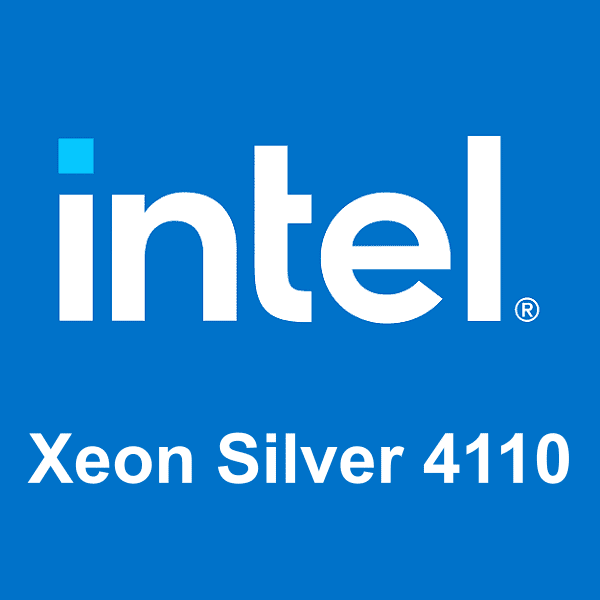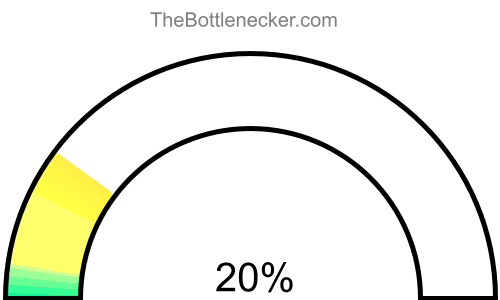Hitman: Absolution bottleneck calculator
Intel Xeon Silver 4110 and AMD Radeon RX Vega 56
Hitman: Absolution
7680 × 4800
1 monitor
1. Select game
Currently selected:

Hitman: Absolution
2. Select processor
Currently selected:
Intel Xeon Silver 4110
3. Select graphic card
Currently selected:
AMD Radeon RX Vega 56
4. Select resolution
Currently selected:
7680 × 4800 resolution
(1 monitor)
Calculation result
Bottleneck percentage
In a system configuration featuring the Intel Xeon Silver 4110 and AMD Radeon RX Vega 56, the AMD Radeon RX Vega 56 could potentially act as a bottleneck to the Intel Xeon Silver 4110 performance in the Hitman: Absolution with 7680 × 4800 and 1 monitor. While the Intel Xeon Silver 4110 is well-equipped to manage strenuous computational tasks, the AMD Radeon RX Vega 56 limited graphical prowess may compromise the overall system efficiency. This disparity could lead to decreased performance and less effective utilization of system resources. To rectify this imbalance, an upgrade to a more capable graphics card that complements the Intel Xeon Silver 4110 processing abilities is advisable.

With a screen resolution of 7680 × 4800 and 1 monitor, this configuration demonstrates a 1.8% graphics card bottleneck when performing Hitman: Absolution.
Processor and graphic card utilizations
In a computing setup featuring the Intel Xeon Silver 4110 and AMD Radeon RX Vega 56, under the context of Hitman: Absolution with a screen resolution of 7680 × 4800 and 1 monitor, the processor is expected to have an utilization rate of 70.1%, while the graphics card is projected to be utilized at 83.2%.
It's crucial to understand that these figures signify theoretical maximums based on typical CPU-to-GPU workload distribution ratios for certain tasks or gaming experiences. Achieving these high levels of utilization in real-world settings can be a challenging endeavor.

Playability
- Playable
- Frames per second
-
A game is considered "playable" if it can consistently run at 60 FPS on high settings. This ensures a smooth and visually appealing gaming experience free from lags or stutters.
Heatmap of bottleneck
During gameplay scenarios, your Intel Xeon Silver 4110 might not operate at its full potential due to the constraints imposed by the AMD Radeon RX Vega 56. In such cases, the AMD Radeon RX Vega 56 may struggle to swiftly process and relay data, resulting in underutilization of the Intel Xeon Silver 4110. Therefore, the AMD Radeon RX Vega 56 will be operating at its maximum capacity, leaving the Intel Xeon Silver 4110 capabilities untapped.
In the hierarchy of bottlenecks, a graphics card bottleneck is often considered less severe than a processor bottleneck. When a graphics card bottleneck occurs, the AMD Radeon RX Vega 56 operates at its uppermost limits, thereby allowing you to extract the best performance possible from the card. This ensures that you benefit from the full scope of the AMD Radeon RX Vega 56 features.
One distinct advantage of not maxing out the Intel Xeon Silver 4110 is the enhanced ability to efficiently manage other background tasks. As the Intel Xeon Silver 4110 is not operating at full capacity while gaming, it can allocate computational resources to other ongoing activities like background processes or multitasking, without any performance trade-offs. This contributes to a smoother and more flexible overall system operation.
To gain a deeper understanding of these potential bottlenecks, consider referring to our heatmap. On the heatmap, the X-axis depicts the CPU Score, and the Y-axis signifies the GPU Score. This visualization can help identify the relationship between various CPUs and GPUs, giving you valuable insights into how to better balance your system.

By matching your Intel Xeon Silver 4110 CPU Score with the AMD Radeon RX Vega 56 GPU Score on the heatmap, you can more accurately assess how these components interact and pinpoint where bottlenecks may occur. Utilizing this heatmap analysis can guide you in making informed hardware decisions that lead to a more balanced and effective computing setup tailored to your specific needs.
General bottleneck calculations
The bottleneck calculations presented here are geared specifically towards in-game scenarios, providing valuable insights into how your hardware configuration could impact gaming performance. However, it's crucial to understand that bottlenecks can manifest in various types of tasks and applications. Below, you will find bottleneck calculations segmented into three primary categories: General Tasks, CPU Intensive Tasks, and GPU Intensive Tasks. This segmentation allows for a more nuanced understanding of how your system's components interact under different types of workloads.
General tasks bottleneck result
For general tasks that include web browsing, video streaming, office applications, and basic multitasking, the bottleneck result offers a comprehensive look at how well your CPU and GPU are balanced. If the bottleneck percentage leans heavily towards either the CPU or GPU, it might be beneficial to consider an upgrade for the more taxed component to ensure smoother system performance.
CPU intensive tasks bottleneck result
When it comes to CPU intensive tasks, such as video editing, 3D rendering, or scientific computing, the bottleneck calculation primarily focuses on whether your processor is powerful enough to handle these workloads efficiently. Here, a high bottleneck percentage for the CPU would indicate that your processor is the limiting factor, making tasks slower than they could be with a more robust CPU.
GPU intensive tasks bottleneck result
In scenarios involving GPU intensive tasks—like advanced gaming, graphical rendering, or video processing—the bottleneck calculation highlights the efficiency of your graphics card in relation to the overall system. A high bottleneck percentage on the GPU side would suggest that your graphics card is the limiting component, potentially hindering your system's ability to deliver optimal graphical performance.
Bottleneck solutions
Replace processor
If your graphic card is causing the bottleneck but you're considering replacing your processor, reconsider this approach. Unless your processor is already on the verge of becoming outdated, upgrading it might not offer a significant performance boost, particularly in graphics-heavy tasks.
- Intel Core i5-10400T Full details
- Intel Core i5-9400 Full details
- AMD Ryzen 5 3400G Full details
- Intel Core i7-7700K Full details
- Intel Core i5-8400 Full details
- Intel Core i3-10105F Full details
- Intel Core i7-6700K Full details
- Intel Core i5-8500 Full details
- AMD Ryzen 5 1500X Full details
- AMD Ryzen 5 3350G Full details
- AMD Ryzen 5 PRO 1500 Full details
- AMD Ryzen 5 PRO 3400G Full details
- AMD Ryzen 5 PRO 3350G Full details
- Intel Core i3-10300 Full details
- Intel Core i5-8600T Full details
- Intel Core i7-4930K Full details
- AMD Ryzen 5 2500X Full details
- Intel Core i5-9600T Full details
- Intel Core i7-7740X Full details
- Intel Core i3-10100F Full details
- Intel Core i7-7700 Full details
- AMD Ryzen 5 2400G Full details
- Intel Core i3-10100 Full details
- Intel Core i3-10105 Full details
- AMD Ryzen 5 PRO 3400GE Full details
- Intel Core i5-9400T Full details
- Intel Core i7-3960X Full details
- Intel Xeon E5-2689 Full details
- Intel Xeon E-2174G Full details
- Intel Xeon E5-2690 Full details
- Intel Xeon E5-2670 Full details
- Intel Xeon E3-1270 v6 Full details
- Intel Xeon E3-1280 v6 Full details
- Intel Xeon E5-2643 v2 Full details
- Intel Xeon E5-2620 v4 Full details
- Intel Core i5-1140G7 Full details
- Intel Xeon E-2134 Full details
- Intel Xeon E3-1275 v6 Full details
- Intel Xeon E-2144G Full details
- Intel Xeon E5-1650 v2 Full details
- Intel Xeon E5-2680 Full details
- Intel Xeon E5-2651 v2 Full details
- Intel Xeon E-2244G Full details
- Intel Xeon E3-1260L v5 Full details
- Intel Xeon E3-1240 v5 Full details
- Intel Xeon E5-2470 Full details
- Intel Xeon E5-2665 Full details
- Intel Xeon E3-1270 v5 Full details
- Intel Xeon E5-1660 Full details
- Intel Xeon E3-1280 v5 Full details

Impact of Changing Screen Resolution
Increasing the resolution in this scenario will only make the bottleneck worse, as the GPU will be under even more stress, leading to lower frame rates and reduced graphical quality. It won't significantly ease the load on the already underutilized processor.
Read moreReplace graphic cards
When the graphic card becomes a system bottleneck, upgrading it can provide a significant boost in performance. Opt for a card that better matches the capabilities of your processor to get a more balanced system. This will also enable you to run games and applications at higher settings, offering a vastly improved user experience.
- NVIDIA GeForce RTX 4060 Full details
- AMD Radeon RX 6700 XT Full details
- NVIDIA GeForce RTX 2080 SUPER Full details
- NVIDIA TITAN V Full details
- AMD Radeon RX 6700 Full details
- NVIDIA TITAN Xp COLLECTORS EDITION Full details
- NVIDIA GeForce GTX 1080 Ti Full details
- NVIDIA GeForce RTX 2080 Full details
- NVIDIA TITAN Xp Full details
- NVIDIA GeForce RTX 2070 SUPER Full details
- AMD Radeon RX 7600 XT Full details
- AMD Radeon RX 6650 XT Full details
- NVIDIA GeForce RTX 2060 SUPER Full details
- AMD Radeon RX 6600 XT Full details
- AMD Radeon RX 5700 XT Full details
- AMD Radeon RX 5700 XT 50th Anniversary Full details
- AMD Radeon VII Full details
- NVIDIA GeForce RTX 3060 Full details
- AMD Radeon RX 7600 Full details
- NVIDIA GeForce RTX 2070 Full details
- AMD Radeon RX 7700S Full details
- NVIDIA GeForce GTX 1080 Full details
- AMD Radeon RX 6600 Full details
- NVIDIA GeForce RTX 2060 Full details
- AMD Radeon Pro W5700 Full details
- NVIDIA GeForce GTX 1070 Ti Full details
- AMD Radeon RX 5700 Full details
- AMD Radeon RX Vega 64 Full details
- NVIDIA GeForce GTX 1070 Full details
- AMD Radeon RX 5600 XT Full details
- NVIDIA GeForce GTX 980 Ti Full details
- NVIDIA TITAN X Full details
- NVIDIA RTX A2000 Full details
- AMD Radeon Pro WX 8200 Full details
- Intel Arc A770 Full details
- AMD Radeon Vega Frontier Edition Full details
- NVIDIA GeForce GTX TITAN X Full details
- NVIDIA Quadro RTX 8000 Full details
- AMD Radeon PRO W6800 Full details
- NVIDIA Quadro GV100 Full details
- NVIDIA TITAN RTX Full details
- AMD Radeon PRO W7700 Full details
- NVIDIA RTX A4000 Full details
- NVIDIA Quadro RTX 6000 Full details
- NVIDIA Quadro GP100 Full details
- AMD Radeon PRO W6600 Full details
- NVIDIA Quadro RTX 5000 Full details
- NVIDIA Quadro RTX 4000 Full details
- NVIDIA Quadro P6000 Full details
- AMD Radeon Pro Vega 64 Full details

Impact of Changing Screen Resolution
If your graphics card is bottlenecking the system, lowering the screen resolution will allow the card to handle data more efficiently, resulting in higher frames per second. However, it's worth noting that lower resolutions will require less data processing from the CPU, which could create a new bottleneck there.
Read moreOffers for AMD Radeon RX Vega 56
 Red Dragon
Red Dragon
 ROG STRIX
ROG STRIX
 Radeon RX Vega 56 8G
Radeon RX Vega 56 8G
 AIR BOOST OC
AIR BOOST OC
 PULSE
PULSE
 NITRO+
NITRO+
| Product name | Merchant | Available | Price |
Merchant
Available
Price
|
|---|---|---|---|---|
|
PowerColor Red Devil AMD Radeon RX 5700 XT 8GB AXRX 5700XT 8GBD6-3DHE/OC 1 new from 539.00 $. 5 used from 218.00 $. Last updated 45 minutes ago. |

|
Yes | 218.00 $ |
Yes
|

|
Yes | 320.45 $ |
Yes
|
|
|
PowerColor Red Dragon AMD Radeon Vega 56 8GB HBM2 AXRX Vega 56 8GBHBM2-2D2HD/OC |

|
Yes | 479.00 $ |
Yes
|
|
MSI Radeon RX Vega 56 Air Boost, G OC Graphics Board vd6516 1 new from 499.00 $. 2 used from 425.00 $. Last updated 39 minutes ago. |

|
Yes | 499.00 $ |
Yes
|

|
Yes | 549.99 $ |
Yes
|
Product pricing and availability information was updated as of the date and time listed, but is subject to change. If you choose to purchase a product from a retailer, the price and availability displayed on their website at the time of purchase will apply. We may earn a commission from qualifying purchases made through the links to participating retailers on this site. However, this does not impact the products or prices that are displayed or the order in which prices are listed.
Bottleneck calculator types
Select purpose bottleneck calculator
Before selecting a bottleneck calculator, consider your primary computing tasks. For general activities like web browsing and office work, the calculator evaluates the balance between your CPU and GPU. If you focus on CPU-intensive tasks like video editing or 3D rendering, the tool will highlight processor performance. For GPU-centric tasks such as gaming or graphical rendering, it will assess the efficiency of your graphics card. Choose the appropriate calculator to accurately identify potential system bottlenecks for your specific use-case.
Select game bottleneck calculator
By selecting a game from the list, the calculator will analyze potential bottlenecks specifically tailored to that game's system requirements and graphical demands. This allows you to optimize your setup for a smoother, more responsive gaming experience. Choose the game that aligns with your interests to get the relevant bottleneck analysis.







































